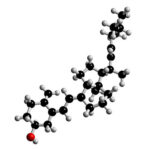 NutraIngredients.com has a review.
NutraIngredients.com has a review.
Here are the highlights.
2 forms of vitamin D
- Vitamin D refers to two biologically inactive precursors.
- D2: Also known as ergocalciferol.
- D3: Also known as cholecalciferol, which is produced in the skin on exposure to UVB radiation and is more bioactive than D2
- Both D3 and D2 precursors are metabolized in the liver and kidneys to form 25- hydroxyvitamin D (25(OH)D) — the non-active ‘storage’ form — and 1,25-dihydroxyvitamin D (1,25(OH)2D) — the biologically active form.
- While our bodies manufacture vitamin D on exposure to sunshine, the levels in some northern countries are so weak during the winter months that our body makes no vitamin D at all.
- Actually, the levels can be low along the equator too.
- As a result, dietary supplements and fortified foods are seen by many as the best way to raise intake of vitamin D.
The bottom line?
Science supports maintaining adequate levels. Vitamin D deficiency in adults reported to precipitate or exacerbate the following conditions.
- Osteopenia
- Osteoporosis
- Muscle weakness
- Fractures
- Autoimmune diseases
- Infectious diseases
- Cardiovascular diseases
There’s also evidence that vitamin D may reduce the incidence of several types of cancer and type-1 diabetes.
4/1/10 21:17 JR